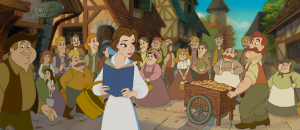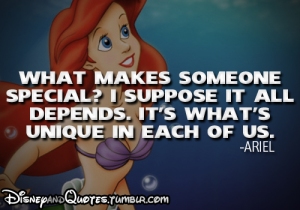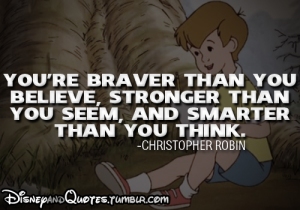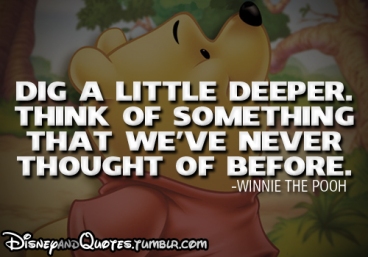Hello!
So final entry before the synthesis blog, SCARY! I feel like I have a 1001 things left to say, but on the tip of my tongue right now is the idea of ‘community’.
Last week I mentioned cyber bullying. If our bullies are now online and so are our friends, shops, clubs and parents, is our entire community not now a series of online interactions?
Ainsworth (2002) has suggested that community places a role in education. It is suggested that the community in which a child grows up in will influence a child’s educational goals and motivation to learn (Andrews, Garfinkal, Parker, Perry & Rauh, 2003).
If you’re anything like me, your ideal concept of community will be something like this:
A whimsical, nurturing, disneyesque series of cute interactions and singing animals. However, Zaidieh (2012) suggests that our actual community is more like this:
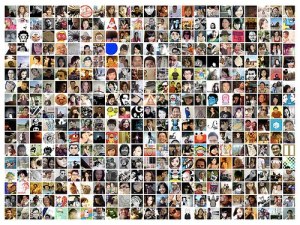 A mass of online communications in the form of clicks, tweets, likes and pokes.
A mass of online communications in the form of clicks, tweets, likes and pokes.
This shift in community has occurred not only for physical communities, but for academic communities too. Zaidieh argues that online communities allow students to learn through interaction with online friends/personas. However, these personas may not always be genuine. It is argued that being able to change one’s identify allows students to overcome fears of social perception and educational anxiety. In addition, Zaidieh suggests that as students spend copious amounts of leisure time on social media, online communities have a greater impact on extra curricular learning than their classroom environment.
Social media in education causes an increase in collaborative learning. Frechette (2013) found that online based learning programmes had a higher rating of community than the traditional classroom. Furthermore, Frechette has suggested that a strong sense of online academic community (OAC) encourages this collaborative learning, resulting in an increase in class discussion and conceptual understanding. Social media in education shifts educational power to students, allowing them to become “authoritative producers of knowledge”. When students are encouraged to explore information themselves, and share this with their OAC, they demonstrate more motivation in their learning, thus helping education extend from the classroom to extra curricular learning. Frechette argued that increasing community through social media decreases the authority of an educator, this is seen as beneficial, as collaborative learning through videos and blogs develops understanding more effectively than an autocratic teaching system.
Orlando (2010) suggests that each student has a personal learning environment (PLE), a topic or interest they enjoy. This implies that learning can be encouraged by linking education to personal relevance. In many cases, this link remains relevant, for example, if a student is interested in medicine, but is studying Native American history, they should be given opportunities to discuss and evaluate the healthcare of Native American tribes in their blogs. Orlando argues that a student’s individual PLE will shape their OAC. Social media allows students to select what OACs they compile information from, based on their PLE. As the web is incredibly vast and rich in information, a student’s educational community can consist of scholars and students around the world with similar interests.
Jenkins (2008) suggests that our academic communities create a collective intelligence (CI). CI refers to the combination of knowledge provided by all members of an academic community. An example of CI is our class. We all have various interests and various degrees of knowledge in our education, some of us research feedback, some research technology and some people research grading etc. Although we may not be educational experts, individually the combination of our communities’ knowledge is impressive. CI suggests that students have the ability to both contribute their individual knowledge and retrieve knowledge from their community. Social media causes online communities to be larger, and therefore greater in CI, allowing students to absorb more information. Jenkins argues that OACs face academic problems together; for example, Wikipedia allows users to edit information, therefore community members interested in particular areas can collaborate information in order to increase their CI, which can thus increase the individual knowledge of community members.
Finally, OACs have been suggested to make education accessible to everyone. Jenkins argues that we are motivated by community, students who do not have a motivational home environment, can instead be motivated by the community they have chosen as a result of their PLE. Furthermore, Frechette argued that social media allows community to go above class, race and socioeconomic standing. This means that all students have an equal opportunity to learn, and that they can learn in a community regardless of their academic ability.
In conclusion, a student’s community can aid or hinder their education, be it offline or online. The social media revolution can motivate students to learn beyond the classroom around their personal learning environment. A student’s individual goals and learning can be direct through social media to form an online academic community, and this allows students to access large amounts of knowledge from their community intelligence. Above all, social media can generate an academic community that enhances collaborative learning to aid a student’s conceptual understanding, with each individual learner, providing their own insight and learning from someone else.
Thanks for reading!
*****
References
Ainsworth (2002): http://ajph.aphapublications.org/doi/abs/10.2105/AJPH.94.3.440
Andrews et al (2003): http://onlinelibrary.wiley.com/doi/10.1002/jcop.10049/abstract
Zaidieh (2012): http://wcsit.org/pub/2012/vol.2.no.1/The%20Use%20of%20Social%20Networking%20in%20Education%20Challenges%20and%20Opportunities.pdf
Frechette (2013): http://journalofmedialiteracy.org/index.php/current-issue/98-david-considines-ten-technology-tips-for-principals
Orlando (2010): http://www.facultyfocus.com/articles/edtech-news-and-trends/personal-learning-environments-help-students-extend-learning-beyond-the-classroom/
Jenkins (2007): http://www.idunn.no/ts/dk/2007/02/confronting_the_challenges_ofparticipatoryculture_-_media_education_for_the?languageId=2
